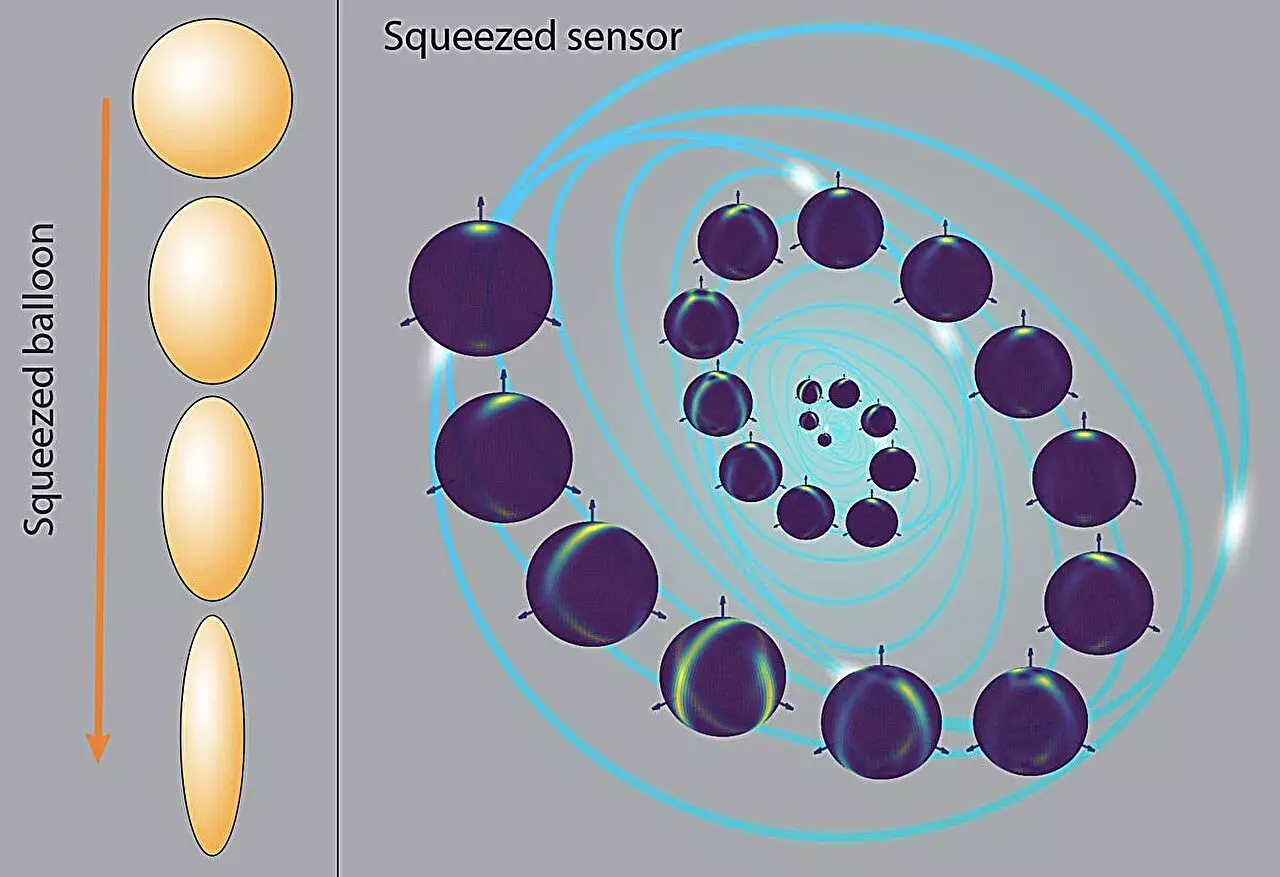Quantum squeezing is a fascinating principle rooted in quantum physics, representing a unique manipulation of uncertainty within quantum systems. Imagine a balloon that symbolizes a quantum state — when untouched, it remains a perfect sphere, embodying a balanced distribution of uncertainty across its dimensions. However, applying pressure to one side of the balloon causes a transformation: the squeezed side flattens while simultaneously expanding the opposite side. This analogy serves to illustrate the core concept of quantum squeezing, wherein the uncertainty in one measurable property is decreased, even as the uncertainty in a related property increases proportionally.
In quantum mechanics, this phenomenon plays a crucial role in enhancing precision measurements. To fully grasp why quantum squeezing captures significant interest among physicists, it is essential to recognize that while the overall uncertainty in a system remains consistent — akin to the air contained within the balloon — the application of squeezing techniques provides the opportunity to measure certain quantities with heightened accuracy. This advancement has been particularly valuable in specialized fields, such as improving the precision of atomic clocks, thereby leading to innovations in timekeeping and synchronization technologies.
Despite the advantages offered by quantum squeezing, its application in scenarios involving multiple parameters presents a complex challenge. The task of accurately measuring variables like position and momentum concurrently, for instance, demands sophisticated methods to navigate the interplay of uncertainties. Research recently emerged from Tohoku University’s Dr. Le Bin Ho, published in Physical Review Research, seeks to address these challenges by investigating the efficacy of squeezing in enhancing measurement precision within quantum systems that inherently involve multiple parameters.
Through theoretical and numerical analyses, Dr. Ho’s research emphasizes the need for a deeper understanding of the mechanisms that can facilitate maximum precision in intricate quantum measurement scenarios. As elucidated in the study, it targets the evaluation of multi-phase measurements that involve a three-dimensional magnetic field interacting with identical two-level quantum systems. Such intricate setups may present opportunities for achieving precise measurements — achieving the theoretical pinnacle of accuracy. The quest for optimal precision can yield considerable advancements across both scientific and technological landscapes.
The implications of Dr. Ho’s findings extend beyond academic curiosity. By refining the precision of quantum measurements across multiple factors, the research could catalyze transformative advancements in various applied technologies. For instance, in the realm of quantum imaging, this enhanced precision has the potential to yield sharper images, much like a high-definition photograph compared to a pixelated version. In fields such as quantum radar, achieving this level of accuracy could allow for more reliable detection of objects, resulting in improved safety and security measures.
The effects of these advancements will be felt even in the design and functionality of atomic clocks, which underpin essential technologies like GPS systems. Such enhancements would promote a new era of accuracy, encouraging consumers and industries alike to capitalize on the benefits of time-sensitive applications.
Furthermore, the intersection of biophysics and quantum squeezing offers tantalizing prospects. Advances in imaging techniques, such as Magnetic Resonance Imaging (MRI), could lead to a greater sensitivity in capturing molecular and cellular processes. Early detection of diseases through more effective biosensors exemplifies how quantum squeezing could represent a medical revolution, ultimately improving health outcomes.
Looking forward, the prospects within this domain appear promising yet demanding. Dr. Ho expresses a desire to explore further how noise influences the mechanisms explored in this research and to identify methods for mitigating such variables. As investigations into quantum squeezing continue to evolve, the groundwork laid by Dr. Ho’s study offers a pathway toward enhanced quantum technologies that could reshape our understanding and application of quantum systems in both scientific inquiry and day-to-day life.
The exploration of quantum squeezing reflects a critical intersection of theoretical physics and practical technology. As researchers delve into the multifaceted dimensions of this quantum phenomenon, the mission to push barriers within measurement precision imbues hope for a future enriched with advancements we have yet to fully conceptualize. Through the lens of quantum squeezing, the interplay of uncertainty becomes a canvas for innovation, paving the way for the next generation of groundbreaking technologies.


Leave a Reply